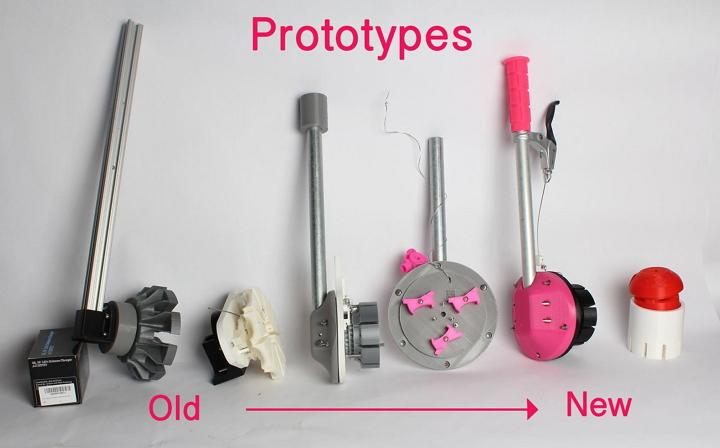 Rapid prototyping and 3D printing have opened the world of product development to a community beyond professional engineers and designers to include a range of smart people with helpful, if not necessarily lucrative, ideas.
Rapid prototyping and 3D printing have opened the world of product development to a community beyond professional engineers and designers to include a range of smart people with helpful, if not necessarily lucrative, ideas.
As a result, a pair of brilliant and dedicated designers have created a wheelchair attachment meant to allow any wheelchair to be powered via a rowing motion, and the piece is 3D printable, open source and consequently, available to anyone in need.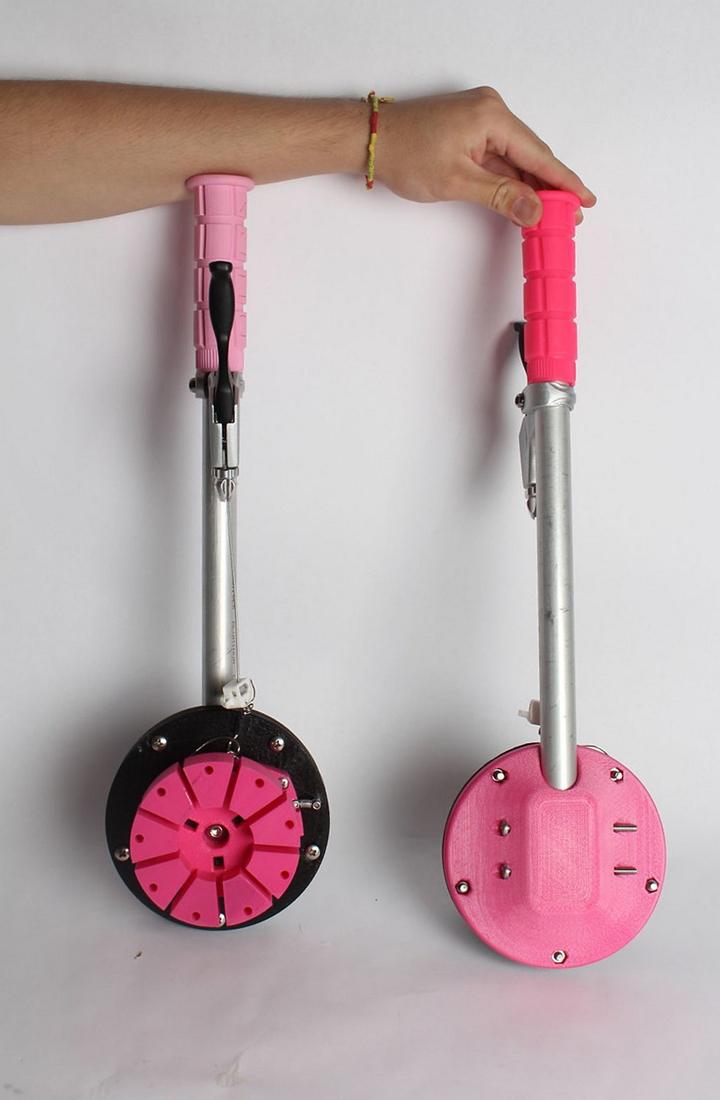
Kate Reed is an avid unicyclist and a street performer at Faneuil Hall in Boston, MA, and Nathaniel Tong is a competitive fencer and entrepreneur who has started two businesses on the strength of products he’s made himself.
Their Hand Drive wheelchair attachment is a finalist in the 2015 Best Product category on Hackaday.
The wheelchair hack is an answer to the expensive lever-powered wheelchairs they saw that retailed anywhere from $2,000 to $10,000.
Rather than take on the task of completely redesigning the wheelchair, the pair sought to make such lever-powered wheelchairs more accessible to everyday users. The resulting attachment is almost entirely 3D printable – and costs only $40 to make.
Their Hand Drive wheelchair attachment can be attached to any wheelchair and lets the user make a rowing motion to bring the larger muscle groups into play.
It features a dual ratchet mechanism where one ratchet is engaged by a spring to move the wheelchair forward as the handles are pumped, and to move backwards, a user simply squeezes the brake on the handlebar. That disengages one ratchet and engages the other, and the wheelchair moves backwards.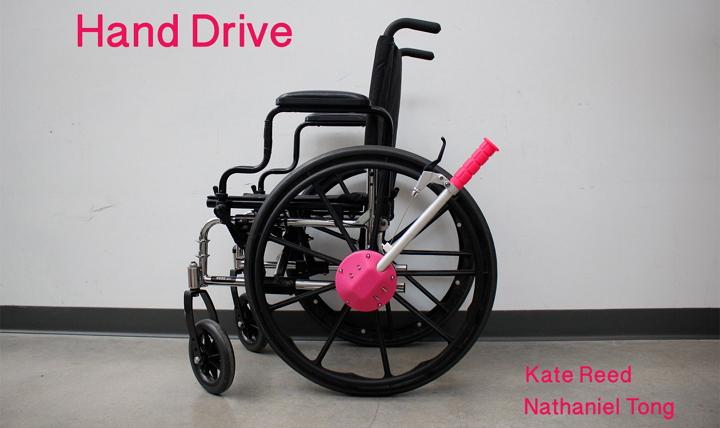
Reed and Tong say the open source design of the Hand Drive means it can be customized for the needs of an individual user – say a child with smaller hands – and each piece can be adjusted to fit.
With just six 3D printed parts, a handful of screws, lock nuts, some aluminum pole, a mountain bike brake assembly, a bicycle brake cable and a spring, the device is marvelous in its simplicity. 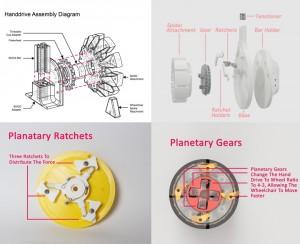
“So far we have been through five major prototypes and dozens of sub-prototypes. It’s been a long process but we finally feel like we are getting somewhere significant,” Reed says. “We now have three final stages of the Hand Drive, one with a single double ratchet, one with three double sided ratchets, and one with planetary gears incorporated into it. Although we have gotten each design to a high level of functioning, we are still working and still trying to improve our designs.”
One of their major goals is to work towards a design where the planetary ratchets can be 3D printed rather than milled.
They say much of their motivation came from finding that statistics regarding wheelchair users say many are unlikely to have jobs and are substantially more likely than the majority of the population to live in poverty.
While the current iteration of the Hand Drive is slow, they feel it can be made faster with improvements to the planetary gears. You can check out all their documentation for their Wheelchair Hand Drive project on the Hackaday page they created.
Have you seen any other improvements to wheelchair design which rely on 3D printing to make them more efficient? Let us know in the 3D Printed Wheelchair Hand Drive forum thread on 3DPB.com.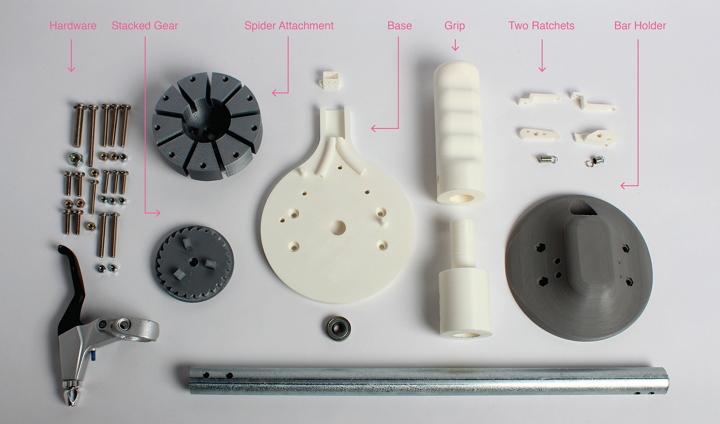
Subscribe to Our Email Newsletter
Stay up-to-date on all the latest news from the 3D printing industry and receive information and offers from third party vendors.
You May Also Like
3D Printed Heat Spreader Could Improve Efficiency of Electronics
The low-hanging fruit for decarbonization has long been improving the efficiency of existing systems, hence the justification for LED lights and ENERGY STAR certified appliances. While such minor moves are...
3D Printing News Unpeeled: Marine Gearboxes, 3D Printed Motors and $1.7 Million in Seed Funding
UK based Equipmake just released their Ampere-220 e-axle system. The system, which is meant for high performance electric cars, was similar to one released on the Ariel HIPERCAR. It has...
CEAD Unveils 36-Meter-Long 3D Printer for Abu Dhabi’s Al Seer Marine
CEAD, a Dutch original equipment manufacturer dedicated to large-format 3D printers, has unveiled what it claims to be the world’s largest robotic arm-based 3D printer. At 36 meters long and...
3D Printed Biocomposites Could Help Reduce Marine Plastic Pollution
Concerns about the impact of plastic litter and microplastics in the oceans are at the forefront of environmental study. For decades, the marine environment has suffered from the degradation of...




































